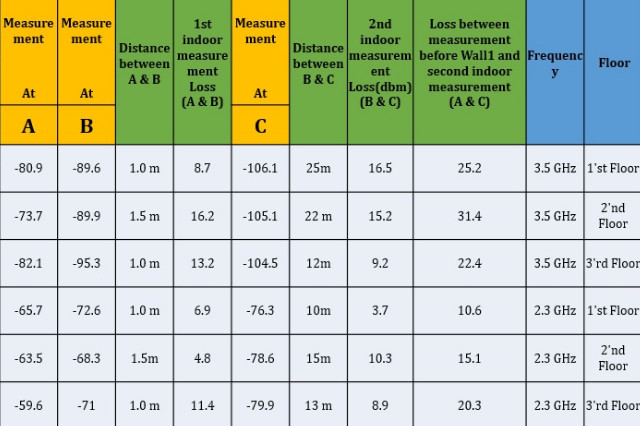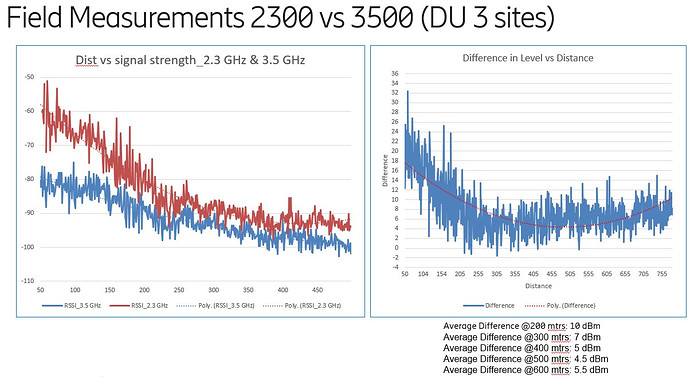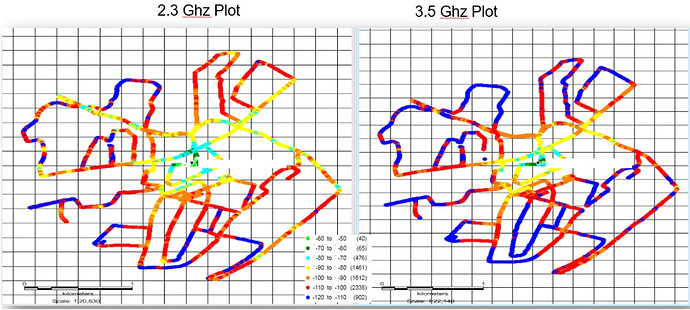Hi Experts,
Anyone having some field based results of expected gain difference between 2600MHz and 3500MHz NR i.e.
- Expected coverage gain of 2600MHz NR compare 3500 MHz NR
- Expected gain in terms of indoor coverage by 2600MHz compare to 3500MHz NR.
- Any expected capacity Gain by Quality improvement
It is by considering both 2600 & 3500 MHz using same system of 64T64R and same bandwidth.
In general lower spectrum range of 2600 MHz compare to 3500 MHz can provide how much gain.
Hi @Kaleem, not sure if this answers your question.
We did CW measurement in 2.3 GHz and 3.5 GHz for an operator in India in a particular metro city.
The idea was to understand the decay in unmodulated signal of the 2 bands in different clutter types.
Here you have for DU clutter type with observation in difference in signal strength w.r.t distance.
1 Like
It is really valuable and quite good to see curve of diffrence as expected.
It is from 10 dBm to 5 dBm at 600 meter and after that again gain increases, quite interesting @750 meter it is again almost 10 dBm.
Really thanks.
Interesting!
Similar study we did with one of live network in New zealand, but we checked RSRP andnot RSSI.
Only difference was “difference” graph was gradually declining.
How can this happen? I mean difference reducing and then again increasing?
This is to answer your second query. We did indoor measurement comparison between 2.3 Ghz and 3.5 Ghz by placing CW Transmitters for the 2 bands in a particular site. This is only one sample case in DU environment, we did almost 100 such cases.

Great thanks, so if I understand right there is approx. 15 dB difference between 3.5 & 2.6 for indoor losses (1st & 2nd floor).
That is quite big diffrence and good gain by 2.6 Ghz.
Hi, just an example of a sample plot. The difference in level between the bands increases the further you move away from the site.
This is just one sample case, we took samples of multiple sites to observe the behavior mentioned in the curve.


